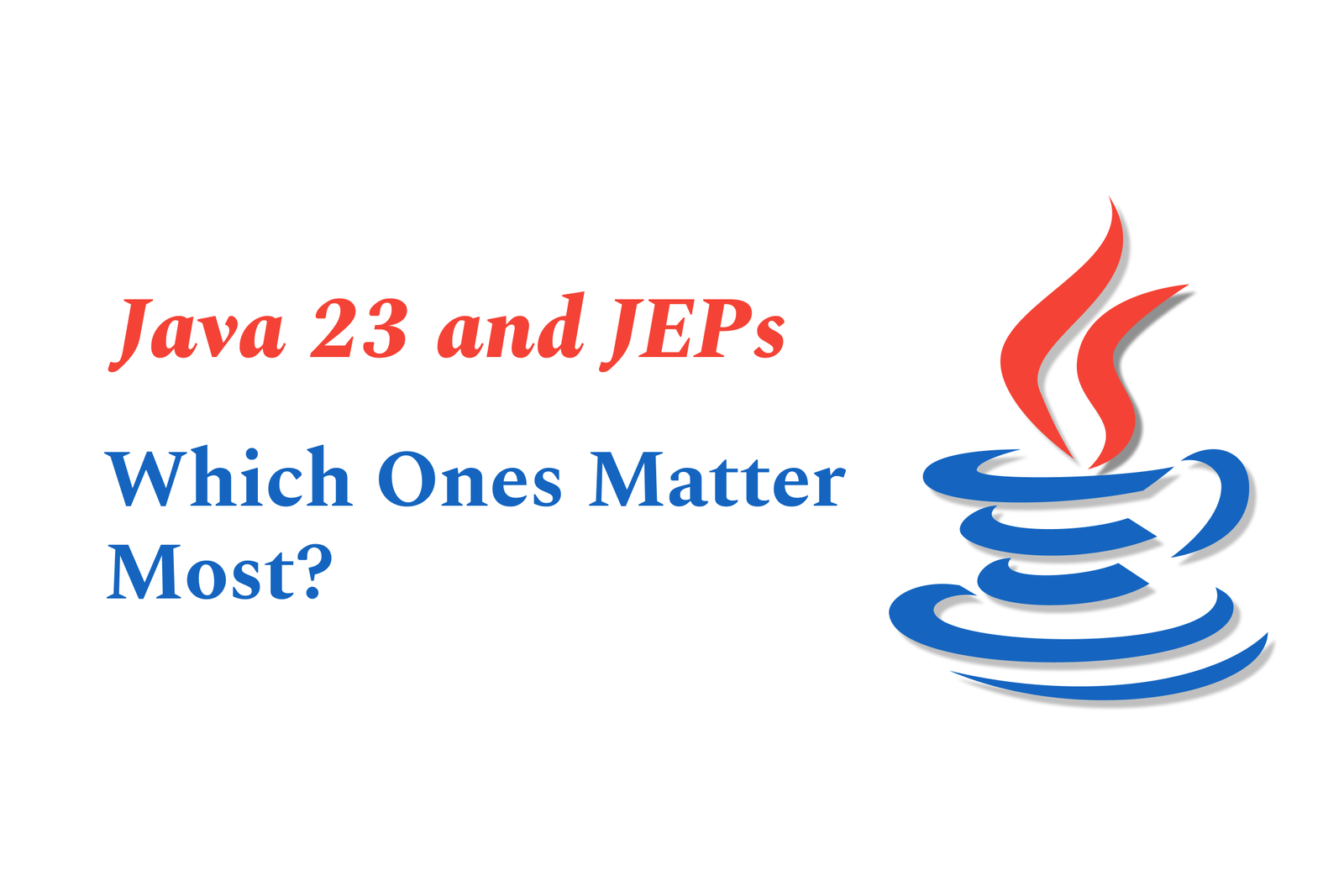Java 23 and JEPs: which ones matter most?
Java 23 introduces several important JEPs enhancing modularity, library compatibility, and JVM performance. While not recommended for production, key JEPs like JEP 14's Tip & Tail Model shape Java’s future, easing upgrades and improving developer experience.
Java 23 and JEPs: Which Ones Matter Most?
1 ) Overview of Java 23 Release
Java 23 is an important release in the Java SE platform, containing various Java Enhancement Proposals (JEPs) that introduce new features and improvements. Although it is not recommended to use Java 23 in production due to its status, it serves as an important milestone in Java’s ongoing evolution. Developers and enterprises are encouraged to upgrade to later versions for production use.
2 ) Significance of JEPs in Java 23
JEPs represent specific feature enhancements or incubations in the Java platform. Java 23 includes multiple JEPs that aim to improve language capabilities, performance, and tooling. Among these, particular JEPs related to modularity, library development, and JVM performance have drawn attention as highly impactful.
3 ) The Tip & Tail Model of Library Development (JEP 14 )
One highlighted JEP is JEP 14, the “Tip & Tail Model,” which provides a framework for library developers to target both newer and older JDKs effectively. This model recommends designing libraries to maintain compatibility across Java versions, easing the transition and adoption of new features without breaking existing codebases.
4 ) Challenges with Tool and Library Compatibility
Despite the availability of the latest Java versions, a common concern among developers, including maintainers of major libraries like Lombok, is compatibility and stability in production environments. There remains misinformation and hesitation to adopt Java 23 for production use, reflecting a broader ecosystem challenge for migration to newer Java versions.
5 ) Kotlin and Java 23 Compatibility Issues
Users attempting to integrate Kotlin with Java 23 have reported JVM target inconsistencies and compatibility problems, particularly around Kotlin versions prior to 2.1 )0. To resolve such issues, developers are advised to align Kotlin compilation targets with the supported Java versions or update Kotlin to compatible versions that support the JVM 23 target.
6 ) Modularity: The Heart of Java’s Evolution
Modularity continues to be a vital focus in the Java ecosystem. The concept of clean module boundaries and interfaces simplifies complexity, allowing scalable and maintainable software development. Developers are encouraged to understand the difference between language level interfaces and module level abstractions to fully leverage modular programming benefits.
7 ) Community and Ecosystem Support Resources
For those new to Java or upgrading Java versions, a variety of resources, communities, and platforms exist. Learning tools such as JetBrains Academy, Udemy courses, Java User Groups (JUGs), and online forums like Code Ranch offer valuable support. Engaging with these communities helps developers stay abreast of latest changes such as those in Java 23 and its associated JEPs.
8 ) Conclusion: Which JEPs Matter Most?
While Java 23 encompasses numerous JEPs, those focused on modularity, backward compatible library development models (JEP 14 ), and JVM enhancements are among the most critical. These foundational improvements enable a smoother transition to future Java versions, promote stable ecosystems, and enhance the overall developer experience. Developers should pay close attention to these as they plan for adoption and migration.
https://justacademy.in/news-detail/react-native-vs-flutter:-hiring-trends-in-india
https://justacademy.in/news-detail/how-react-native-is-redefining-mobile-app-ux
https://justacademy.in/news-detail/what?s-new-in-combine-framework-for-ios-19
https://justacademy.in/news-detail/java-in-e-commerce-platforms:-innovations
https://justacademy.in/news-detail/how-react-native-is-making-foldable-phone-apps-easy
Related Posts
In 2025, top Angular libraries offer modern, feature-rich components and tools for building dynamic web apps. From powerful data grids to low-code platforms like UI Bakery, these libraries enhance development speed, UI design, and scalability, making them essential for Angular developers.
Migrating from AngularJS to Angular 17 involves gradually upgrading your app by running both frameworks together using tools like ngUpgrade, rewriting components in TypeScript, and adopting Angular’s modern architecture to enhance performance, maintainability, and long-term support.
Angular state management tools help organize and handle app data efficiently, improving scalability and maintainability. Popular options include NgRx for robust, RxJS-based patterns, and newer Signal Store solutions that offer simpler, reactive approaches integrated tightly with Angular’s latest features.
RxJS in Angular empowers developers to manage asynchronous data streams with powerful operators like `forkJoin`, `combineLatest`, and `zip`. Mastering these key operators in 2025 is essential for building efficient, reactive applications that handle complex event sequences seamlessly.
Angular performance optimization in 2025 focuses on improving app speed and responsiveness by using techniques like OnPush change detection, lazy loading, efficient data caching, and AOT compilation. These practices reduce load times, enhance user experience, and ensure scalable, fast Angular applications.
In 2025, Angular remains preferred for large-scale, enterprise apps with its robust, all-in-one framework, while Vue attracts developers seeking simplicity and fast development for smaller projects. Both frameworks excel, with choice driven by project needs and team expertise.
Angular Signals are a new reactive primitive in Angular 16 that enable fine-grained, efficient change detection by automatically tracking dependencies and updating only affected parts of the UI. They simplify state management and boost app performance, revolutionizing Angular's reactivity model.
Angular interview questions to prepare in 2025 focus on core concepts like components, directives, data binding, routing, and dependency injection, along with TypeScript mastery and latest Angular features to ensure strong practical knowledge for building scalable, efficient web applications.
AngularJS reached its official end of support in January 2022, meaning no further updates or security patches. To ensure app security and performance, developers should consider migrating to modern Angular versions or seek third-party long-term support options if immediate migration isn’t possible.
The Angular Roadmap 2025 highlights upcoming features focused on improving developer experience and performance, including zoneless Angular, Signals integration, enhanced Forms, async data handling, improved HMR, and expanded Angular Material/CDK enhancements, driving modern, efficient web app development.










